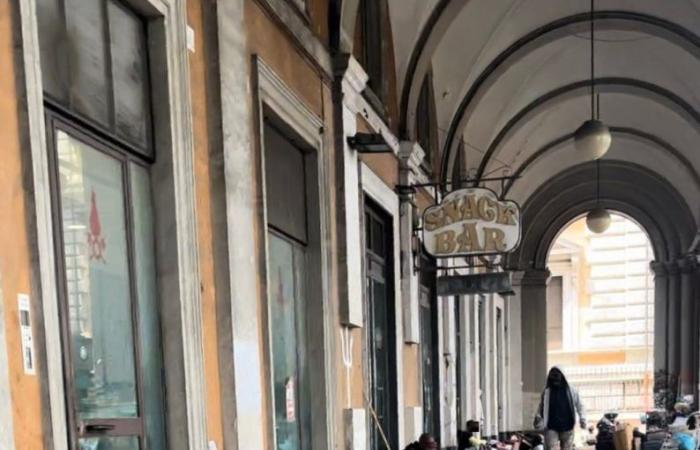
There are 2,204 homeless people in the Rome area, many of Italian nationality with an average age of 45 years. This is what emerges from the results of the “Solidarity Night”, the initiative for the detection of homeless people present in the city, born from the collaboration between Istat and Roma Capitale, which took place last April 20th. The results were presented this morning in the Campidoglio by the councilor for social policies, Barbara Funari, by the central director of Istat censuses, Saverio Gazzelloni, by the senior statistician of the World Bank Federico Polidoro and by Federico Di Leo, Istat social statistics director. In particular, 1,018 people live on the streets or in open areas, of which 948 in the urban areas of the capital’s railway ring and the residential part of Ostia, and 70 in special areas, i.e. hospital premises and the river banks Tiber. However, there are 1,186 people present in night-time reception facilities. Among those interviewed, to whom a questionnaire was administered, 41.1 percent were Italian: 17.5 percent lived on the streets and 23.6 percent in reception facilities. Followed by Romania with 30.7 percent of those interviewed, of which 20.1 percent live on the streets and 10.6 percent in structures. There is also a significant presence of citizens from Somalia (4.2 percent and 5.3 percent) and Morocco (5.8 percent and 2.6 percent).
The data aggregated by geographical area show that 33.9 percent of homeless people on the streets are European nationals (excluding Italy). 14.3 percent of respondents were born in the Maghreb and the Middle East, 18.5 percent in sub-Saharan Africa, 10.6 percent in Asia and 5.3 percent in the Americas. As regards people in reception facilities, 24.4 percent were born in Europe (excluding Italy), 11.7 percent in Maghreb and the Middle East, 20.7 in sub-Saharan Africa, 9 .5 percent in Asia and 10.3 percent in the Americas. The aggregate data by geographical areas highlights an appreciable number of European citizens, in particular natives of Eastern Europe (not just Romania). “This survey is important because without quantitative evidence it is impossible to make policies – observed Federico Polidoro, Senior Statistician of the World Bank -. Africa, together with the Middle East, is confirmed as an important place of origin. These are areas where the worsening of extreme poverty has increased. The pandemic marked an abrupt interruption in the decline in the number of people in absolute poverty in the world. In particular, the pandemic crisis has led to a further worsening of extreme poverty conditions in countries already in great difficulty. Without vast and massive policies that allow us to address this situation, the risk is that the explosion of marginalization will become ever-increasing,” he concluded.
“These numbers give us the reality of the presence of the homeless and on the streets, and it is not a reality that should make us think of an emergency or a security alarm – commented councilor Funari -. It is a reality, however, that must move us all to commit ourselves, starting from regulations that at a national level must help more with entry permits for asylum seekers, up to the fact of being able to work together as a Municipality and the Lazio Region to open the possibility for more third sector bodies to find properties suitable for reception”, he concluded. The survey shows the presence of homeless people in 204 urban areas, out of a total of 338 (i.e. in 60.4 percent of the areas). There are 15 areas characterized by a greater presence (10 or more homeless people), while in 134 no homeless people were encountered.
The 48 reception facilities, almost all of the permanent provision of night shelter, include both large facilities (even over 170 beds) and small or very small facilities (even less than 5 beds). “This path has seen different paths meet and intersect – explained Saverio Gazzelloni, central director of Istat Censuses -. There was a process of rapprochement between the census directorate and the welfare directorate within Istat which led to the conceptualization of this type of collaboration in order to be more present on such an important issue. This experience was fundamental for us as it allowed us to delve deeper into methodological and organizational aspects by experimenting in the field with all the difficulties that may arise. This is why we evaluate this experience positively,” he concluded.
Furthermore, the survey shows that 16.6 percent of the total presence on the street is made up of women, and 82.7 percent of men. In night shelters these percentages rise to 24.9 and 73.9 percent respectively. The average age of homeless people encountered on the street is 45 years. While the average age of people hosted in reception facilities is 64 years. In particular, the estimated age of the people counted during the “Solidarity Night” of April 20th, for which the surveyor was in a position to make an estimate/assessment on the age, the modal class, i.e. the one with the greatest frequency, it is lower in the case of street counting, between 40-49 years. While in the case of reception facilities the largest group is between 60 and 69 years old.
Read also other news on Nova News
Click here and receive updates on WhatsApp
Follow us on the Nova News social channels on TwitterLinkedIn, Instagram, Telegram





